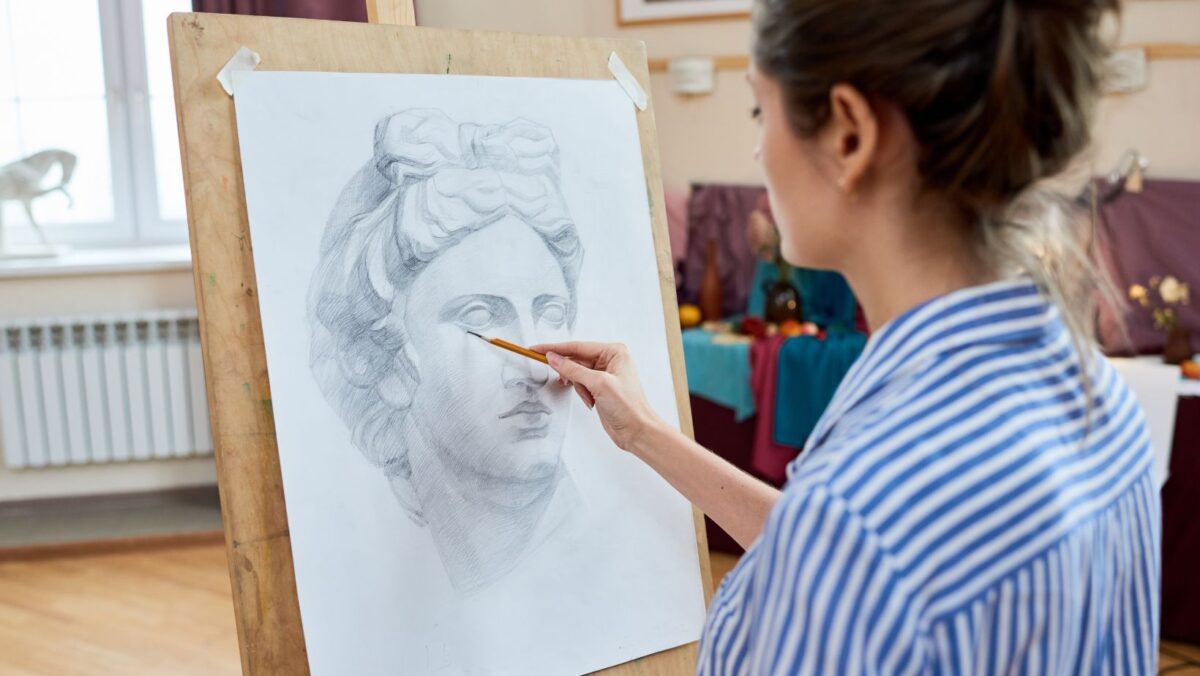Believe it or not, the first steps in drawing didn’t involve pencils or paper. No, they were much more primitive and yet, incredibly innovative for their time.
In the following article, I’ll delve into the earliest drawing processes, shedding light on how our ancestors expressed their creativity. It’s a journey back in time that’s sure to captivate any art enthusiast.
Proses Menggambar Yang Paling Awal Adalah
Human civilization and the art of drawing share a long Proses Menggambar Yang Paling Awal Adalah, intertwined history. From the moment our ancient ancestors first dipped their fingers into a mixture of animal fat and crushed earth, the course for this expressive medium was charted.

Prehistoric cave paintings such as those found in Lascaux, France and Altamira, Spain serve as silent testimonies of our ancestors’ first brushes with creativity. These visual narratives carved onto the walls of caves depict scenes of prehistoric life and spiritual beliefs, traced out with the crude but effective strokes of hands smeared in red ochre and charcoal.
Tool utilization was the next breakthrough. Remember, paper and pencils weren’t the first materials. Pioneer artists experimented with crude “pens” made of reed or bone and “ink” created from plant extracts or ochre mixed with animal fat. These tools were revolutionary, offering greater precision and lasting impact.
Origins of Drawing
Fast forward to ancient Egypt and we see the birth of formal drawing techniques. The Egyptians developed a grid system to ensure accurate proportions in their intricate hieroglyphics and murals. Drawing also held spiritual significance for them, acting as a conduit between the earthly and divine realms.
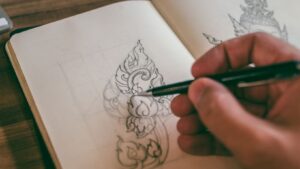
The Greeks and Romans further developed the art of Proses Menggambar Yang Paling Awal Adalah drawing with a emphasis on realistic portrayal and geometric perfection. Their legacy still thrives in modern architectural drawings and anatomical sketches, with techniques such as shading and perspective finding their roots in this period.
The evolution of drawing technologies continued throughout the Middle Ages and Renaissance. Innovations like the quill pen, graphite pencil, and paper introduced new possibilities for artists. Yet the essence of drawing, the intimate connection between hand, instrument, and surface, remains untouched. As I peel back the layers of this extensive history, we’ll discover even more about our artistic inheritance and the origin story of drawing.
Prehistoric Drawing Tools
Delving into the roots of drawing, it is surprising to see the types of tools our ancestors had at hand. The primitive tools were a blend of natural Proses Menggambar Yang Paling Awal Adalah ingredients, which, when coupled with human creativity, brought life to inanimate surfaces.
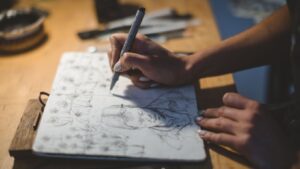
First off, animal fat and crushed earth were prominent materials used for creating early forms of pigment. Think the birth of drawing tools as a by-product of our primal ancestors’ routine activities. Animal fats were common in prehistoric diets, using every part of a hunted animal was essential for survival. It’s from these fats they created a Proses Menggambar Yang Paling Awal Adalah paste-like substance that had the ability to create enduring marks on hard surfaces. Crushed earth, on the other hand, provided the diversity of hues we can spot in most prehistoric cave paintings discovered today.
The second wave of innovation saw early civilizations experimenting with plant extracts and minerals to produce a more varied palette. From primitive ochres to vibrant blues, their rich and varied art exists till date, bearing testimony to their artistic prowess enhanced by evolved tools.
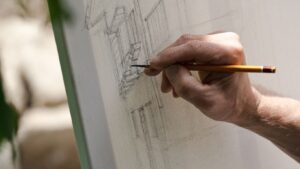
It’s worth mentioning that the earliest artists were not restricted to flat surfaces only. They crafted their stories on anything they could lay their hands on – tree barks, stone tablets, and animal skins, to name a few. These early canvases tell a vivid story of life as they perceived it.
Early drawing tools may seem primitive when compared to today’s art supplies, but their essence remains the same. They served as a bridge between the artist’s hand and the surface, laying the foundation for what we know as drawing today. These tools, primitive yet effective, underline the enduring relationship between Proses Menggambar Yang Paling Awal Adalah hand, instrument, and surface in crafting a piece of art. The tale of drawing’s evolution is incomplete without a close look at its origins in the prehistoric tools that filled the world with color and imagination.
Techniques of Early Artists
Shifting our focus from primitive tools to the techniques, it’s clear that the early artists were no less brilliant than today’s craftsmen. Undeniably, their methods were rudimentary, but they were highly effective nonetheless. Let’s explore some of the techniques our prehistoric ancestors utilized to create their beautiful and meaningful art.

Primitive drawing techniques revolved primarily around two fundamental principles: engraving and painting. Engraving, or incising, involved a series of cuts or scratches on a surface. Our artistic ancestors patiently etched intricate designs into a variety of surfaces, using their primitive chisels and sharp bones. For painting, they’d mix their pigments with a liquid like water or animal fat to create a colorful paste. These early paints were usually applied with fingers, tufts of hair, or even soft stones.
Beyond these techniques, early artists displayed a profound understanding of their surroundings, made evident in their depictions. They’d expertly use texture and shape to denote patterns in nature or the wildlife they’d seen. They could invoke such precision with basic tools simply because they knew their subject matter by heart. Early drawing was less about the instrument and more about the artist’s awareness, vision, and attention.
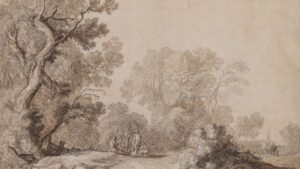
Early drawings were mostly centered around their everyday lives and the natural world, showing hunting scenes, animals, or weather patterns. Importantly, these were not mere visual recordings. Often these scenes told stories, passed on knowledge, or conveyed spiritual beliefs.
Despite the rudimentary techniques and tools, these early drawings remain an enduring testament to human creativity. As we delve deeper into the past, it’s impossible not to marvel at the skill and resourcefulness of these early artists. Their works paved the way for us, reminding us that although art has evolved, the essence remains the same: a deeply personal and human pursuit of expression.
Development of Artistic Expression
Exploring the development of artistic expression brings us to the crux of better understanding the evolution of human creativity. Prehistoric artists were not just merely decorators of their surroundings. Art for them held deeper significance, often intertwined with their survival and spiritual beliefs.
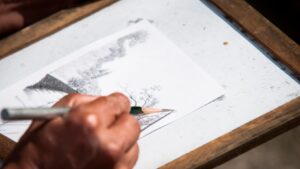
Interestingly, it was not simply a matter of scratch-and-color that these visionary artists employed. From cave walls to rock faces, they harnessed natural landscapes and available tools to tell tales through their creations. They became environmental sculptors. Early artists selected specific rock formations and areas, using them as canvasses to more accurately depict the depth and movement of their characters. Every chisel, engraving, or brush stroke became a symbolic imprint, broadcasting messages from the artist.
Observing their surroundings, they were inspired by the texture, form, and color of the natural world. Their choice of materials was not random. Raw materials and pigments, their paint, were sourced from the earth – ochres, charcoals, and other minerals. These were ground, processed and mixed with liquids like blood, fat, or marrow to create pigments. The application of these concoctions by hand, or sticks gave the artists a range of tone, texture, and effect.

The early artists integrated techniques into their artistry that we’d associate with modern design principles. They used the natural topography of their canvasses to imbue their depictions with a sense of depth and perspective. The choice of site, the material chosen, and the method applied; all these elements unveiled a level of sophistication and intentionality, far beyond what we would expect given the rudimentary nature of their tools.
Undoubtedly, these basic yet ingenious artistic manifestations laid the foundation for the elaborate art forms that permeate our world today. Early artwork serves as artifacts of human consciousness, presenting us with profound insights into the lives, beliefs, fears and hopes of our ancestors. Today, their legacy lives on, reminding us that art, in all its forms, stands as a testament to our shared humanity.

